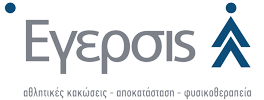
Αυστριακή μελέτη
Αυστριακή μελέτη
Functional recovery after ischemic stroke—A matter of age
Data from the Austrian Stroke Unit Registry
M. Knoflach, MD,
B. Matosevic, MD,
M. Rücker, MD,
M. Furtner, MD,
A. Mair, MD,
G. Wille, MD,
A. Zangerle, MD,
P. Werner, MD,
J. Ferrari, MD,
C. Schmidauer, MD,
L. Seyfang, MoS,
S. Kiechl, MD,
J. Willeit, MD and
For the Austrian Stroke Unit Registry Collaborators
+ Author Affiliations
From the Department of Neurology (M.K., B.M., M.R., M.F., A.M., G.W., A.Z., C.S., S.K., K.W.), Innsbruck Medical University, Innsbruck; Department of Neurology (P.W.), Hospital Rankweil, Rankweil; Department of Neurology (J.F.), Hospital Barmherzige Brueder, Vienna; and Danube University Krems & Gesundheit Österreich GmbH/BIQG (L.S.), Vienna, Austria.
Correspondence & reprint requests to Dr. Knoflach: michael.knoflach@i-med.ac.at
Abstract
Objective: To analyze the association between patient age and good functional outcome after ischemic stroke with special focus on young patients who were numerically underrepresented in previous evaluations.
Methods: Of 43,163 ischemic stroke patients prospectively enrolled in the Austrian Stroke Unit Registry, 6,084 (14.1%) were ≤55 years old. Functional outcome was available in a representative subsample of 14,256 patients free of prestroke disability, 2,223 of whom were 55 years or younger. Herein we analyzed the effects of age on good functional outcome 3 months after stroke (modified Rankin Scale score ≤2).
Results: Good outcome was achieved in 88.2% (unadjusted probability) of young stroke patients (≤55 years). In multivariable analysis, age emerged as a significant predictor of outcome independent of stroke severity, etiology, performance of thrombolysis, sex, risk factors, and stroke complications. When the age stratum 56–65 years was used as a reference, odds ratios (95% confidence interval [95%CI]) of good outcome were 3.4 (1.9–6.4), 2.2 (1.6–3.2), and 1.5 (1.2–1.9) for patients aged 18–35, 36–45, and 46–55 years and 0.70 (0.60–0.81), 0.32 (0.28–0.37), and 0.18 (0.14–0.22) for those aged 66–75, 76–85, and >85 years (p < 0.001). In absolute terms, the regression-adjusted probability of good outcome was highest in the age group 18–35 years and gradually declined by 3.1%–4.2% per decade until age 75 with a steep drop thereafter. Findings applied equally to sexes and patients with and without IV thrombolysis or diabetes.
Conclusions: Age emerged as a highly significant inverse predictor of good functional outcome after ischemic stroke independent of stroke severity, characteristics, and complications with the age-outcome association exhibiting a nonlinear scale and extending to young stroke patients. Neurology® 2012;78:279–285
Leave a reply →
